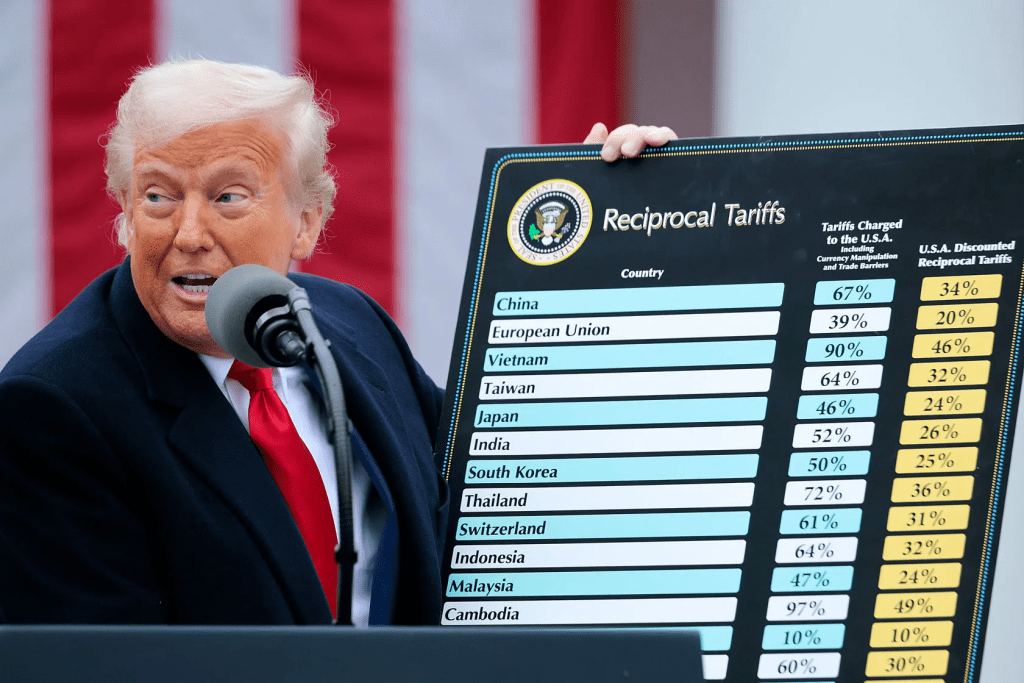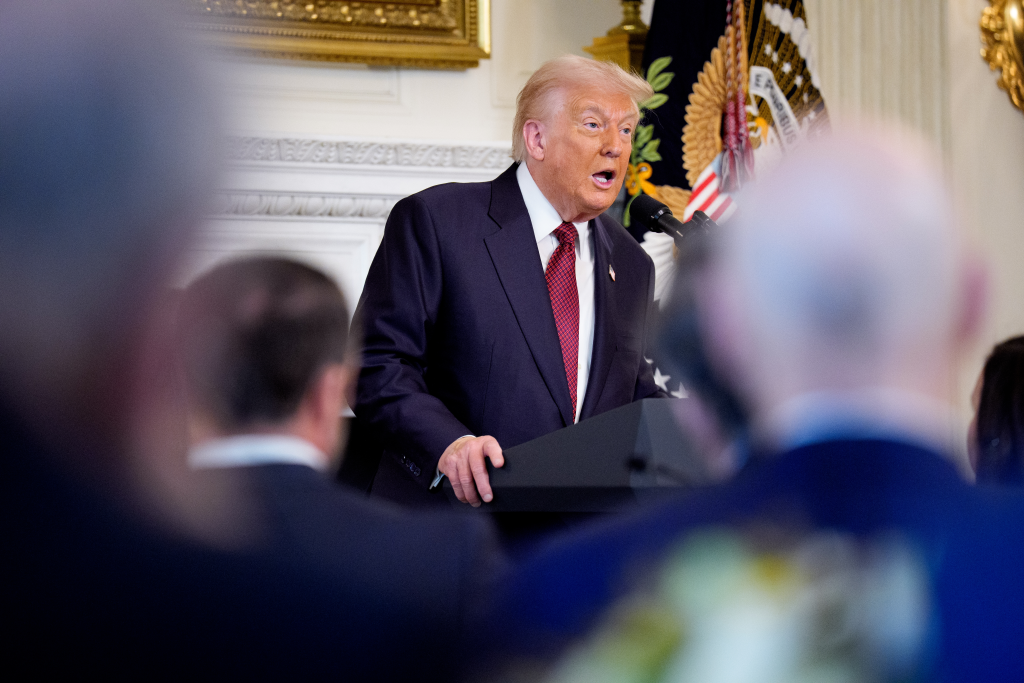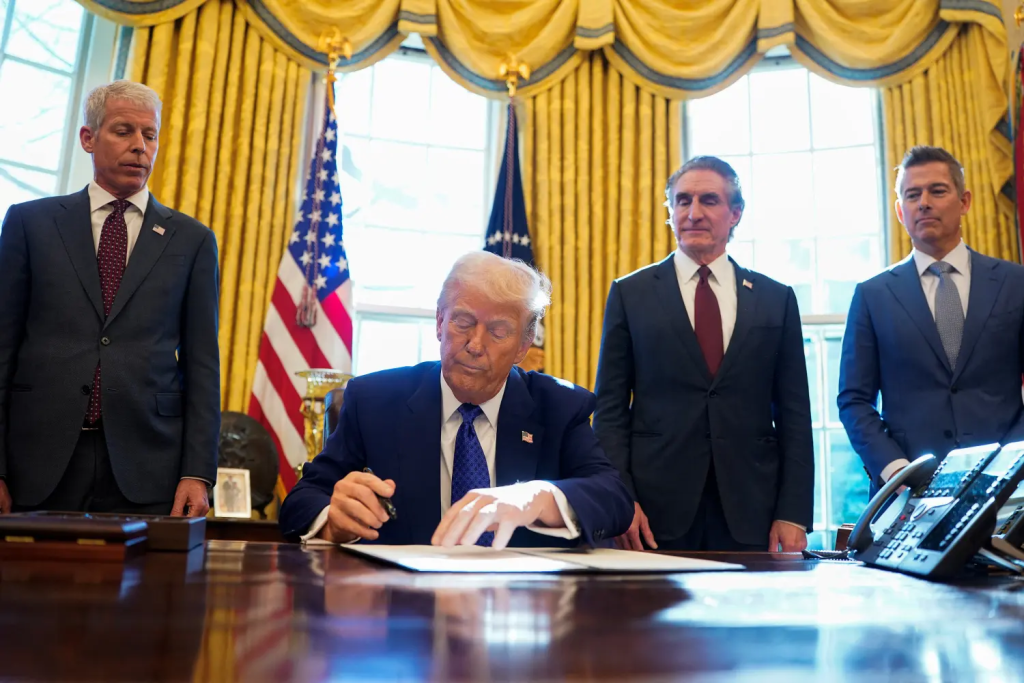After Democrats Flip Key States, President Trump Unleashes a Strategic “Economic Surge” Plan Focused on Cost of Living and Affordability
Fresh off a night that jolted the political establishment, President Donald Trump is once again proving why his instincts remain unmatched in modern American politics. Following Democratic victories in the 2025 midterm elections, including a surprise flip in Virginia’s governorship and a solid hold in New Jersey, Trump has reportedly shifted his focus with precision — doubling down on the issues voters say matter most: cost of living, affordability, and economic stability. According to a new POLITICO report, the former president’s team has identified this as the defining battleground for 2026 and beyond — a pivot that insiders say could completely reshape the GOP’s strategy heading into the next election cycle.
Sources close to the campaign described the move as both tactical and deeply personal for Trump, who has long seen the economy as the ultimate measure of presidential success. “He’s reading the room perfectly,” one strategist told Fox Digital. “Voters may not feel the economic pain as sharply in numbers, but they feel it in their wallets. Trump understands that emotional reality better than anyone.”

The data backs it up. Inflation, while technically down to around 2% according to Federal Reserve metrics, remains one of the most emotionally charged issues in America. Food, housing, and fuel costs are still hovering above pre-pandemic levels, and even families who have seen modest wage increases are feeling squeezed by higher rents and shrinking purchasing power. For Trump, that’s not a statistic — it’s a rallying cry.
“People aren’t reading charts,” a senior campaign advisor said. “They’re reading grocery receipts.”
That sentiment has fueled what Trump insiders are calling a “messaging surge” — a focused return to the kitchen-table politics that defined his 2016 rise. In internal memos circulated after Tuesday night’s election results, Trump’s communications team reportedly emphasized one phrase: ‘Make Life Affordable Again.’ The new economic messaging blitz, expected to roll out nationally over the next few weeks, will highlight real-world struggles under what the campaign brands as “Democratic mismanagement” — skyrocketing rents, unaffordable energy costs, and burdensome taxes.
Trump himself wasted no time echoing that message in private meetings, reportedly telling allies, “If the people can’t afford to live, nothing else matters. You fix that first.”

The timing of the pivot couldn’t be more deliberate. Political analysts say the Democratic wave in Virginia, which saw a progressive candidate win the governorship for the first time in more than a decade, exposed vulnerabilities in the Republican playbook. Despite Trump’s continued popularity among his base, GOP candidates struggled to connect with swing voters frustrated by everyday economic pressures. POLITICO’s report notes that Trump’s inner circle recognized the need to reframe the narrative — moving away from ideological fights and back toward practical solutions that resonate with the middle class.
And as usual, Trump’s pivot was fast, disciplined, and headline-grabbing. Within hours of the election results, he began shaping a new campaign rhythm — one that mixes his trademark confidence with a more grounded tone. “He knows what he’s doing,” a senior GOP operative remarked. “When everyone else panics, Trump recalibrates. That’s what separates him from every other politician in the room.”
The renewed focus on affordability also reflects Trump’s deep understanding of political theater. Unlike traditional candidates who rely on policy white papers, Trump knows the power of emotion and simplicity in connecting with voters. During his 2016 and 2020 runs, his ability to distill complex issues into sharp, memorable phrases helped him dominate the conversation — and this new pivot follows the same playbook. Expect short, viral slogans and real-world examples, not dense economic jargon.
“His core message will be that the Democrats are out of touch with reality,” said a former campaign pollster. “They talk about macroeconomic improvement while families are fighting to pay for milk and rent.”
Democrats, on their part, are publicly dismissing Trump’s new strategy as political theater. A White House advisor told NBC that “Trump’s trying to rewrite the narrative around problems he helped create.” But privately, several Democratic strategists acknowledge that the economic message is their biggest vulnerability. “You can’t tell people inflation is fixed when their bills keep climbing,” one strategist admitted anonymously. “He’s zeroing in on what we fear most — the disconnect between statistics and sentiment.”

Indeed, the numbers are politically tricky. Despite the economy’s technical improvement, public confidence remains shaky. A Gallup poll conducted in late October showed that 62% of Americans still feel the country is “on the wrong economic track.” Even among younger voters, who overwhelmingly supported Democrats in recent races, affordability ranks as the number-one concern. Rent in major cities has risen nearly 18% since 2020, while grocery prices are up 25% compared to pre-pandemic averages.
For Trump, these figures are ammunition. His new speeches, campaign insiders say, will lean heavily on contrast — comparing the tangible prosperity of his pre-2020 presidency to what he calls “Bidenomics fatigue.” Expect him to frame the Democratic Party as obsessed with globalism and green initiatives at the expense of American households.
“Trump’s message is simple,” said conservative commentator Mark Levin. “America was thriving when he was in charge — and people remember that. The left keeps trying to convince voters their lives are better, but Trump’s saying, ‘Look around — do you feel richer?’ That’s powerful.”
The POLITICO piece further highlights growing divisions inside the GOP over strategy. While Trump’s supporters applaud his sharp pivot, some within the party worry it might overshadow legislative goals such as immigration reform and deregulation. A small but vocal faction has urged the former president to “match message with policy,” pushing for immediate proposals that address middle-class tax relief or small business recovery. But Trump’s allies argue that messaging — not policy complexity — wins elections.
“He’s setting the stage,” said one of his campaign media advisors. “The big policy drops will come later. Right now, the mission is to reframe the fight — make it about the people versus the politicians again.”

Even critics within the party can’t deny Trump’s instinct for timing. His pivot comes at a moment when President Biden’s approval ratings on the economy have dipped below 35%, the lowest since taking office. Meanwhile, independent voters — the key to control of Congress in 2026 — list “affordability” as their single most important concern, ahead of healthcare, border security, or climate change.
Political observers also point out that Trump’s move mirrors a broader global trend. In the U.K., Germany, and Canada, populist and conservative leaders are re-centering their platforms around cost-of-living relief. “The world’s middle class is frustrated, and Trump is tapping into that universal feeling,” said political analyst Salena Zito. “He’s not talking about the economy as a spreadsheet — he’s talking about it as a survival story.”
In true Trump fashion, the response from his supporters has been electric. Social media exploded with praise following the Politico report, with phrases like “He knows what he’s doing” and “This is what winning looks like” trending on X (formerly Twitter). Videos of Trump’s fiery post-election remarks racked up millions of views overnight, while GOP donors began calling the pivot “the smartest move of the cycle.”
Still, the shift isn’t without challenges. The Republican base remains split between purists who want sharper cultural battles and pragmatists who favor economic focus. Trump, however, seems unfazed by the division. “He’s always five steps ahead,” a longtime aide told The Daily Mail. “He lets others argue ideology while he talks directly to the voters. That’s why he wins.”
If the next phase of Trump’s campaign follows this trajectory, Americans could see a political reawakening centered not on party loyalty but on the everyday realities of working families. His economic pivot is expected to dominate his rallies heading into the 2026 midterms, complete with testimonies from small-business owners, parents, and young workers struggling to stay afloat in an economy that still feels fragile.
And while Democrats celebrated their victories this week, the mood in Republican circles is shifting from shock to determination. “Every setback for Trump is a setup for a comeback,” conservative host Tomi Lahren said on her show Wednesday. “If Democrats think they’ve broken his momentum, they haven’t seen anything yet.”
In the end, Trump’s greatest political weapon may be the very thing that defines his career — adaptability. He doesn’t chase polls; he shapes them. His decision to recalibrate toward economic messaging after the midterms isn’t a retreat — it’s a counterattack. One built not on abstract ideology, but on the day-to-day struggles that define American life.
As one veteran campaigner summed it up: “When Trump says he knows what he’s doing — believe him. He always has.”



